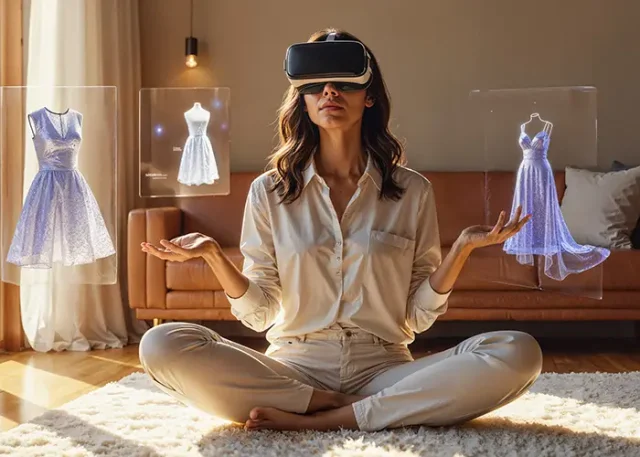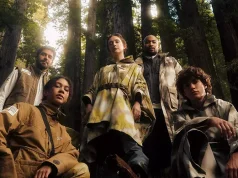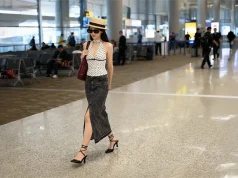
Imagine being able to try on clothes without ever stepping foot in a store or even changing your outfit. This innovative technology allows you to virtually “try on” clothes using just a photo of yourself, revolutionizing the way we shop for fashion. But how does this technology actually work, and what impact could it have on the future of the fashion industry?
A New Shopping Experience
Fashion has always been about self-expression and style, but for many people, the shopping experience can feel more like a chore than an enjoyable activity. Trying on multiple outfits, waiting in line for fitting rooms, and dealing with the frustration of not finding the right size can make shopping a stressful experience. AI clothes changer offer a new solution to these common problems, making the process of trying on clothes more convenient and personalized than ever before.
By using advanced artificial intelligence, these tools are transforming how we shop for clothes. Instead of spending hours in crowded stores or waiting for deliveries that may not even fit, users can now upload a picture of themselves and virtually try on hundreds of outfits within seconds. It’s like having a personal stylist at your fingertips, helping you discover new looks that you may not have considered otherwise.
How Does an AI Clothes Changer Work?
AI clothes changers rely on a combination of machine learning, computer vision, and advanced algorithms to analyze your image and superimpose virtual clothing onto your body. When you upload a photo, the system scans your body shape, proportions, and even posture to ensure that the clothing items fit you realistically. The AI then digitally places various outfits on your body, making it appear as though you’re wearing them in real life.
This technology goes beyond simply changing your clothes in a photo. The AI can adjust the fit of the clothing based on your specific measurements and the way the garment should naturally hang or stretch on your body. It can even match the style, fabric, and texture to create a lifelike representation of how the clothing would actually look on you. It’s a highly personalized, efficient, and engaging way to shop for clothes—one that eliminates the need for physical fitting rooms entirely.
The Benefits of AI Clothes Changers
One of the main reasons AI clothes changers are gaining popularity is their convenience. In today’s fast-paced world, people are looking for ways to save time, and virtual fitting rooms provide just that. With AI clothes changers, there’s no need to rush to the store, wait in line, or waste time trying on clothes that may not even fit or suit you. Instead, you can try on a wide variety of outfits in seconds, from the comfort of your home.
Moreover, these tools offer a level of personalization that traditional shopping simply can’t match. Instead of relying on a store’s stock or size availability, AI clothes changers allow you to see how clothes will look on your body before you make a purchase. Whether you’re shopping for a new pair of jeans, a formal suit, or a trendy dress, you can visualize how the clothing fits and whether it matches your personal style—without the hassle of physically trying it on.
Another significant advantage of AI clothes changers is their potential to reduce returns and exchanges, which are a major issue in the fashion industry. Many shoppers buy clothes online, only to find that the size or fit isn’t right when the item arrives. With AI clothes changers, you can get a more accurate idea of how an item will fit before you purchase it, minimizing the chances of returns and contributing to a more sustainable shopping experience.
AI Clothes Changers and Sustainability
The fashion industry is one of the largest contributors to environmental pollution, with waste from fast fashion, excess inventory, and shipping emissions being major concerns. AI clothes changers offer a potential solution to some of these problems. By reducing the need for physical store visits and returns, these tools help to cut down on the carbon footprint associated with clothing production and distribution.
In addition, AI-powered fashion tools can encourage more mindful shopping. When shoppers can see how a particular outfit fits them digitally, they’re more likely to make informed decisions about what to purchase. This reduces impulse buying, which can often result in clothing sitting unused in wardrobes or being returned to stores.
Furthermore, AI clothes changers can be used to promote sustainable fashion by allowing consumers to virtually try on second-hand clothes, clothing rental options, or eco-friendly brands without the need for physical inventory. This shift toward virtual fitting rooms could encourage a more sustainable approach to fashion, where consumers choose quality over quantity and are able to access a broader range of options that align with their values.
Challenges and Limitations for Travelers
Despite the many advantages, AI clothes changers are not without their challenges. One of the main limitations is the accuracy of the fit. While the technology has made great strides in recent years, it’s still not perfect. The AI may not always perfectly replicate how certain fabrics will sit on your body, or it might struggle with unique body shapes or sizes. As a result, the virtual try-on experience may not be 100% accurate, which could leave some users feeling uncertain about their purchases.
Another concern is privacy. Since AI clothes changers require users to upload personal images, there are legitimate worries about how this data is stored and used. Brands and platforms offering these services need to ensure that user data is protected and not misused, addressing privacy concerns that could deter users from fully embracing this technology.
Future of AI Clothes Changers
As AI technology continues to advance, the future of clothes changers looks incredibly promising. In the near future, we can expect more accurate and realistic simulations, with the ability to virtually try on clothes in a 360-degree environment, or even incorporate augmented reality (AR) to make the experience even more immersive.
Moreover, as more brands adopt this technology, we may see AI clothes changers become an integral part of the shopping process with help of the latest AI Image Generator, not just in online stores but in physical retail spaces as well. Imagine walking into a store, scanning your body with an AI-powered device, and instantly trying on a variety of outfits without stepping into a fitting room. This could revolutionize the in-store experience, making shopping faster, easier, and more enjoyable.
Conclusion:
AI clothes changers are changing the way we shop, making it more personalized, convenient, and sustainable. While the technology is still evolving, its potential to transform the fashion industry is undeniable. With the rise of virtual fitting rooms and digital try-ons, consumers now have the opportunity to experiment with new styles, reduce waste, and shop with greater confidence. As the technology improves and becomes more widely adopted, we can expect AI clothes changers to become a staple in the future of fashion shopping.





